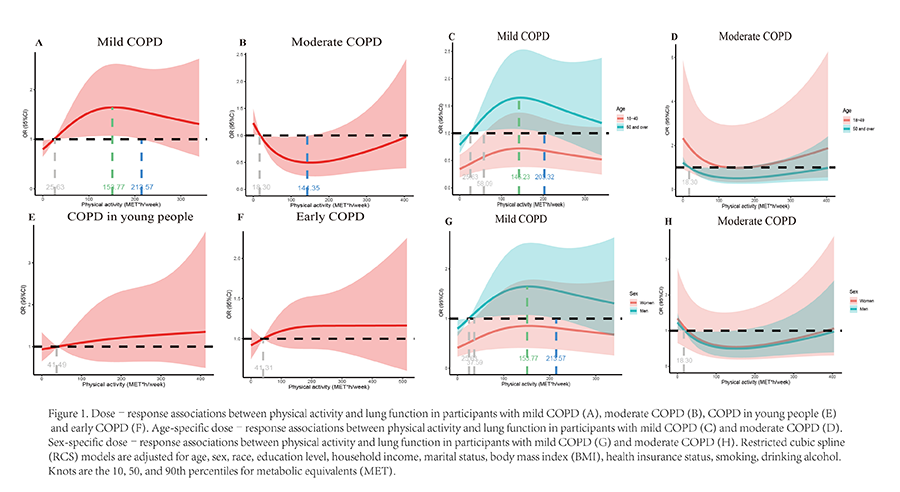Abstract
Aims: To determine the dose?response relationship between physical activity (PA) and pulmonary rehabilitation among different COPD subtypes.
Methods: Data from NHANES 2007 to 2012, 16338 participants were used for this analysis. Among these participants, 312 were mild COPD, 166 were moderate COPD, 973 were early COPD and 130 were COPD in young people. FEV1/preFEV1 was defined as the primary outcome indicator to characterize pulmonary rehabilitation. In addition, the dose-response relationship between the amount of PA and lung function recovery was assessed by restricted cubic spline (RCS) regression.
Results: For mild COPD, 25.63 to 213.57 MET*h per week of PA could promote recovery of lung function, 153.77 MET*h per week is the optimal PA. 0-18.30 MET*h per week PA was beneficial to the rise of lung function for moderate COPD, with the increase of PA, the recovery level of FEV1/preFEV1 benefiting from PA decreases. Among patients with COPD in young people or early COPD, when the PA exceeded 41.49 or 41.31, lung function showed an increasing trend. After sex or age stratification, we also obtained instructive conclusions. Besides, among US adults, only 39.9% mild COPD patients and 41.1% moderate COPD patients met the reasonable range of PA.
Conclusion: The contribution of PA to lung function in COPD patients depends on disease severity, age and sex, and it is inaccurate to advocate for more exercise.